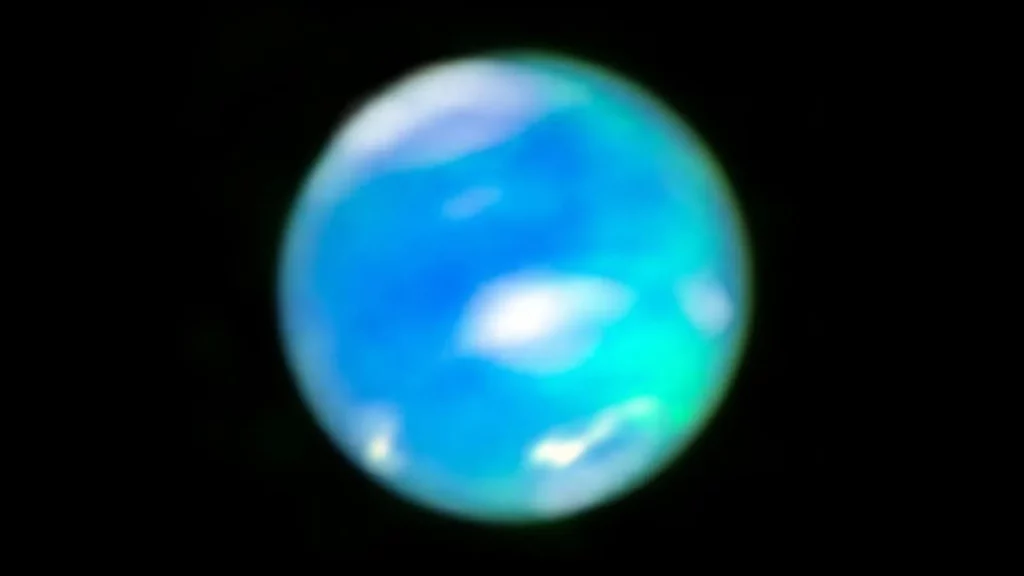
Neptune’s Auroras Imaged For First Time As Webb And Hubble Team Up
Astronomers have made history by capturing the first-ever image of auroras on Neptune, the farthest planet from the sun. This groundbreaking achievement was made possible through a collaborative effort between NASA’s James Webb Space Telescope and the Hubble Space Telescope.
The stunning image reveals a vibrant, cyan-colored display of light dancing across Neptune’s upper atmosphere. The breathtaking scene is unlike anything seen before in our solar system, as it captures the unique auroral activity on this distant ice-giant planet.
Neptune’s magnetic field is irregular due to its tilted 47-degree axis relative to its rotation. This unusual configuration leads to a patchy and scattered distribution of the auroras, defying traditional expectations of polar-based aurora formation around other planets.
The James Webb Space Telescope played a crucial role in this achievement by employing its Near-Infrared Spectrograph (NIRSpec) instrument. Capable of capturing infrared light, NIRSpec is able to detect heat signatures in Neptune’s upper atmosphere that would otherwise be invisible to human observers. The instrument operated at an astonishing -370 degrees Fahrenheit (-223 degrees Celsius), highlighting the extraordinary capabilities of this advanced technology.
The Hubble Space Telescope then combined its visible-light images with the data from James Webb, creating a visual representation of these auroras on Neptune. This achievement represents a major milestone in our understanding of solar system dynamics and planetary magnetic fields.
Neptune joins an exclusive group of celestial bodies that have exhibited auroral activity within our solar system. Every planet besides Mercury, which lacks a substantial atmosphere, is susceptible to experiencing aurora events. Additionally, numerous moons orbiting Jupiter have been found to possess their own unique auroral displays, providing valuable insights into planetary magnetic fields and atmospheric composition.
The discovery of Neptune’s auroras also expands the scope of research possibilities in the field of astrobiology and potentially offers clues about the presence of subsurface oceans beneath certain moon surfaces.
Source: https://www.forbes.com/sites/jamiecartereurope/2025/03/26/neptunes-auroras-imaged-for-first-time-as-webb-and-hubble-team-up/


